Tour Babeth Fribourg's Moroccan-Inspired Townhouse in Manhattan
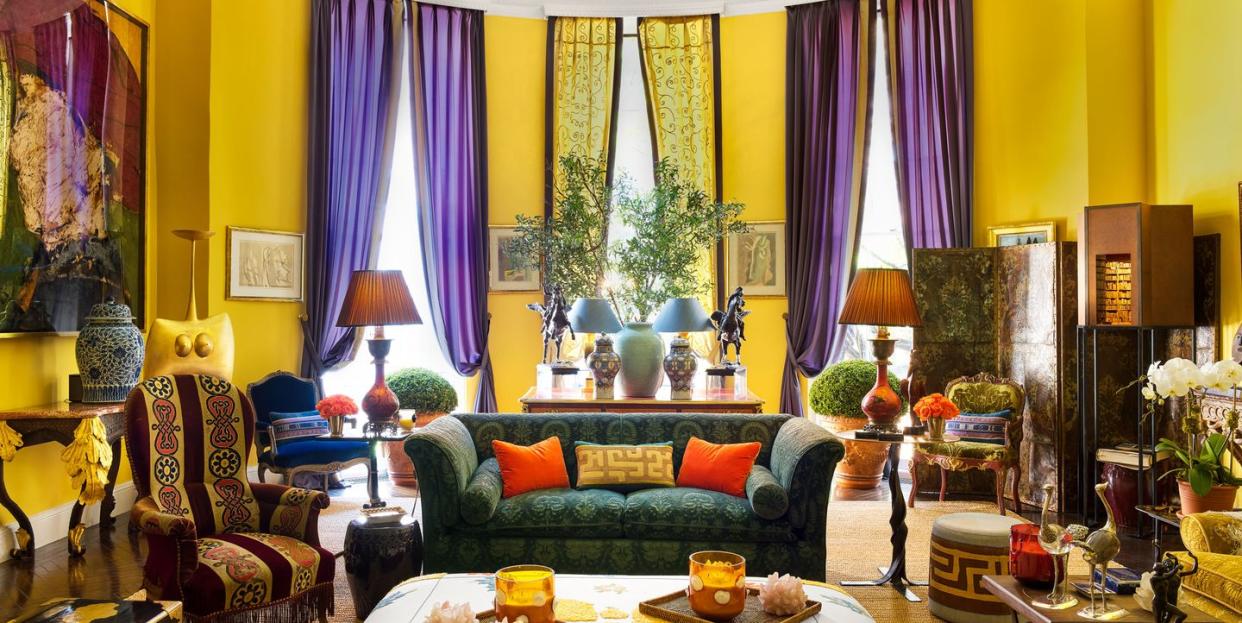
- Oops!Something went wrong.Please try again later.
Among the abiding lessons of Marcel Proust is this one: A longing for our childhood home never leaves us. Wherever we live, we carry inside us a vision of the place in which we were, if not in every case happiest, then first conscious of the world beyond ourselves.
For Babeth Fribourg, a great lover of Proust, that place was a grand dwelling in Morocco, the house of her father, a worldly businessman and a leader of the small but influential Sephardic Jewish community in Casablanca. It was a place of generations, layered histories, privacy, and substantial comfort, presided over by her father but administered by her mother. Unlike many semi-cloistered Moroccan women of her class and generation, her mother was genuinely cosmopolitan. And yet in important ways the walls of her house contained a private sphere that was, for her, its own universe.
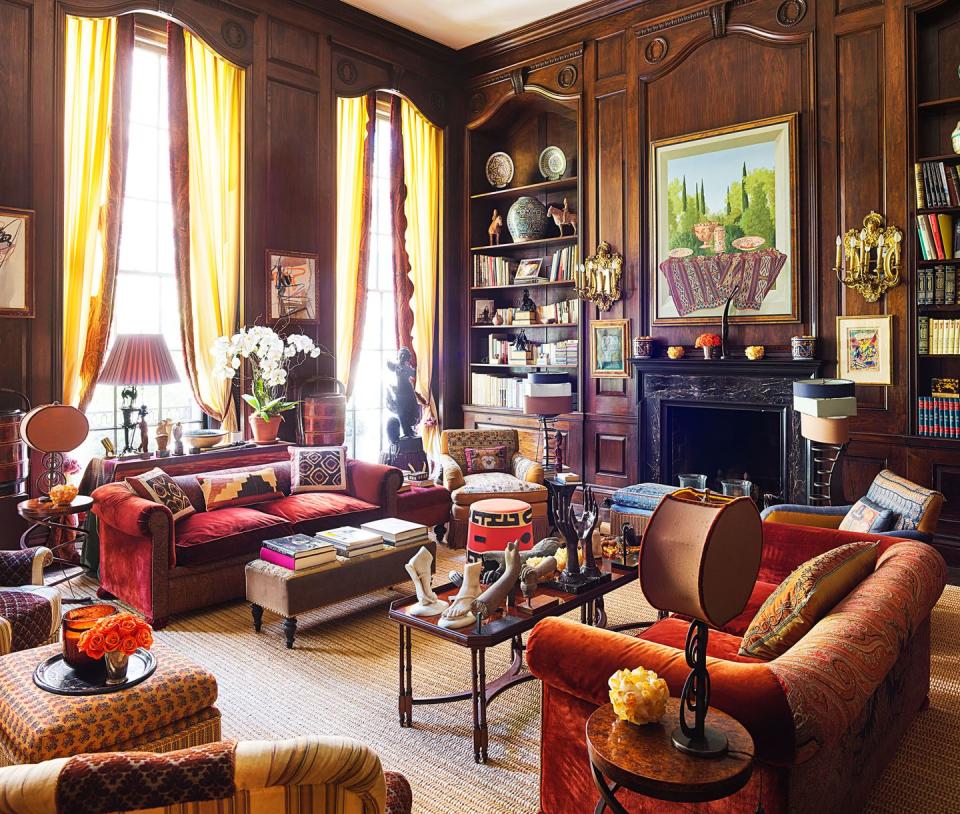
“Her house was the most important thing to her,” says Fribourg, elegant and silver-haired, over drinks in her shadowed library on a warm summer evening. Speaking in a soft voice still accented, after decades in this country, by the French that was her first language, she adds, “My mother loved her home. We have that in common.”
At first glance, the austere brick and limestone mansion on Manhattan’s stolid Upper East Side is unlikely to summon to anyone’s mind a riad—the type of inward-focused dwelling common among wealthy Moroccans. Impassively blank from the street, a typical riad contains worlds enclosed behind its protective walls and within its courtyard gardens. It is a building intended to shield its inhabitants from the harsh North African heat and sun and wind, and equally from the prying and not always benevolent gaze of strangers. “People in Morocco are deeply cautious of the eye of others,” Fribourg says.
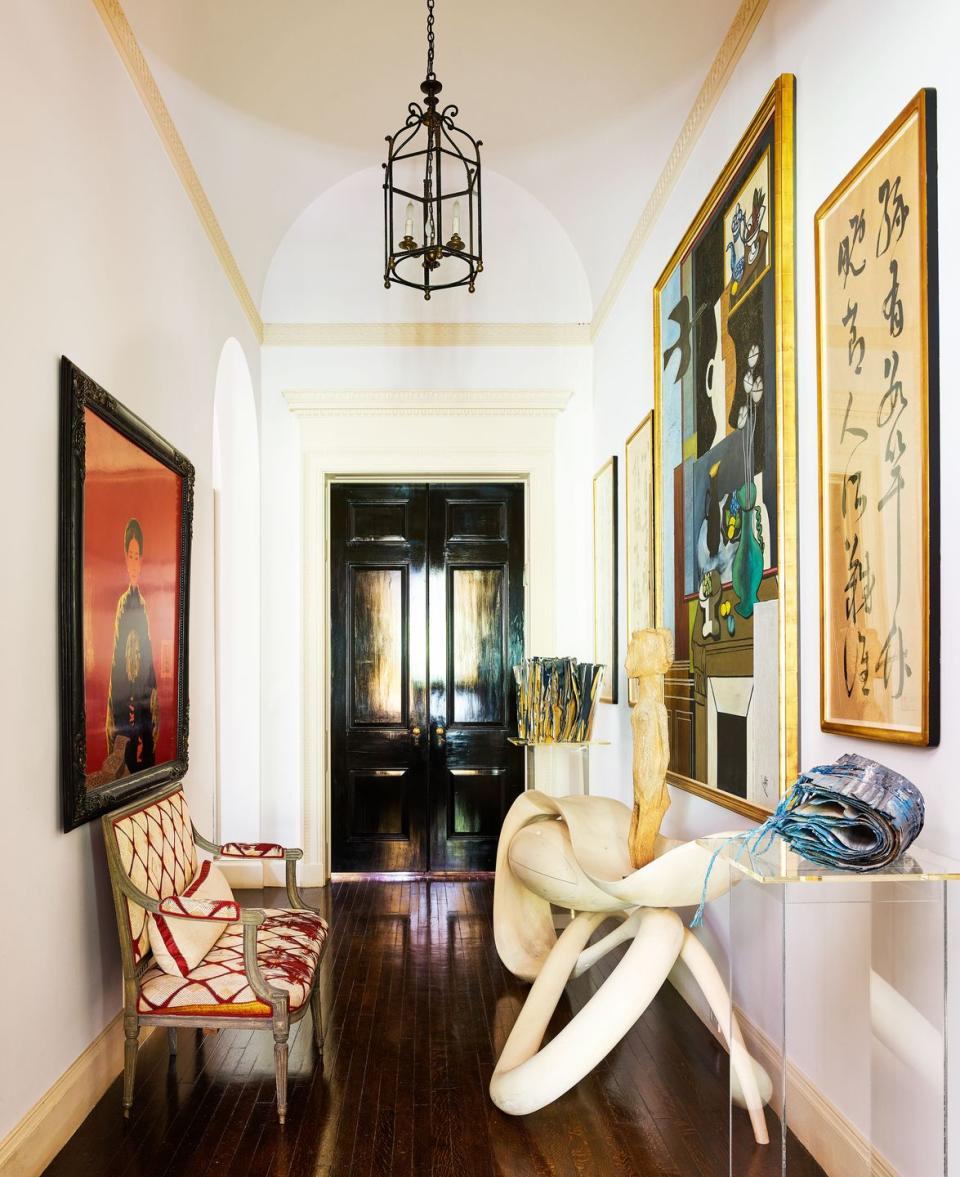
The Fribourg home was designed in the early 20th century for the New York society couple Fulton and Mary Amory Cutting by Delano & Aldrich, and at first glance it would seem to have little in common with buildings on the other side of the world. Yet, as it happens, when first constructed, the Fribourg mansion was entered from a carriage drive leading from adjacent 89th Street. Decades into the life of the house, the deep forecourt was sold and the land developed; a wall went up to conceal what became a courtyard, and thus the orientation of the house was radically shifted so that visitors now enter through what was originally the rear of the building, on 88th.
That façade remains grand, albeit severe without the imposing marble portico, which now looks onto a garden. A wall of serried windows shaded by ochre awnings gives the house the feel of a fortress, anonymously wedged into a street of bombastic Beaux-Arts mansions that are bookended by Madison Avenue at the eastern end and the Guggenheim Museum at the western.
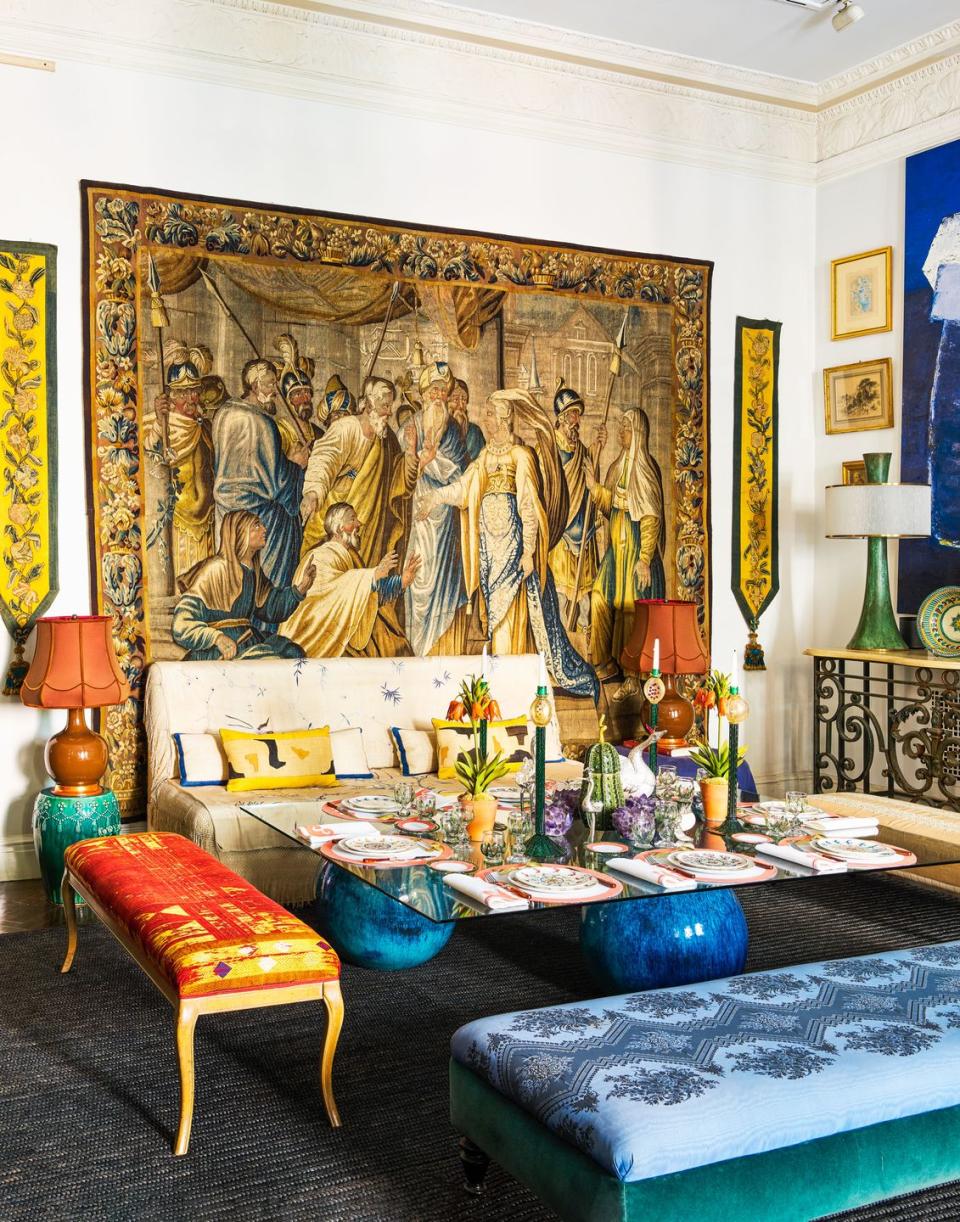
One would never guess, in other words, that behind the house’s glossy black door lie richly appointed interiors more characteristic of Fribourg’s childhood than of the city she has called home for three decades. It is here, in this house, that she and her husband Paul—the scion of a family-owned global grain conglomerate—raised their seven children. And it is here that she put into practice skills for the arrangement and management of a household that follow patterns of taste, custom, style, and hospitality she acquired from her mother.
“My love of color, form, and shape is Moroccan, or Moroccan by way of Spain,” she tells me. “My love of proportion and geometry is French. The love of houses is innate; it’s my emotional basement.”
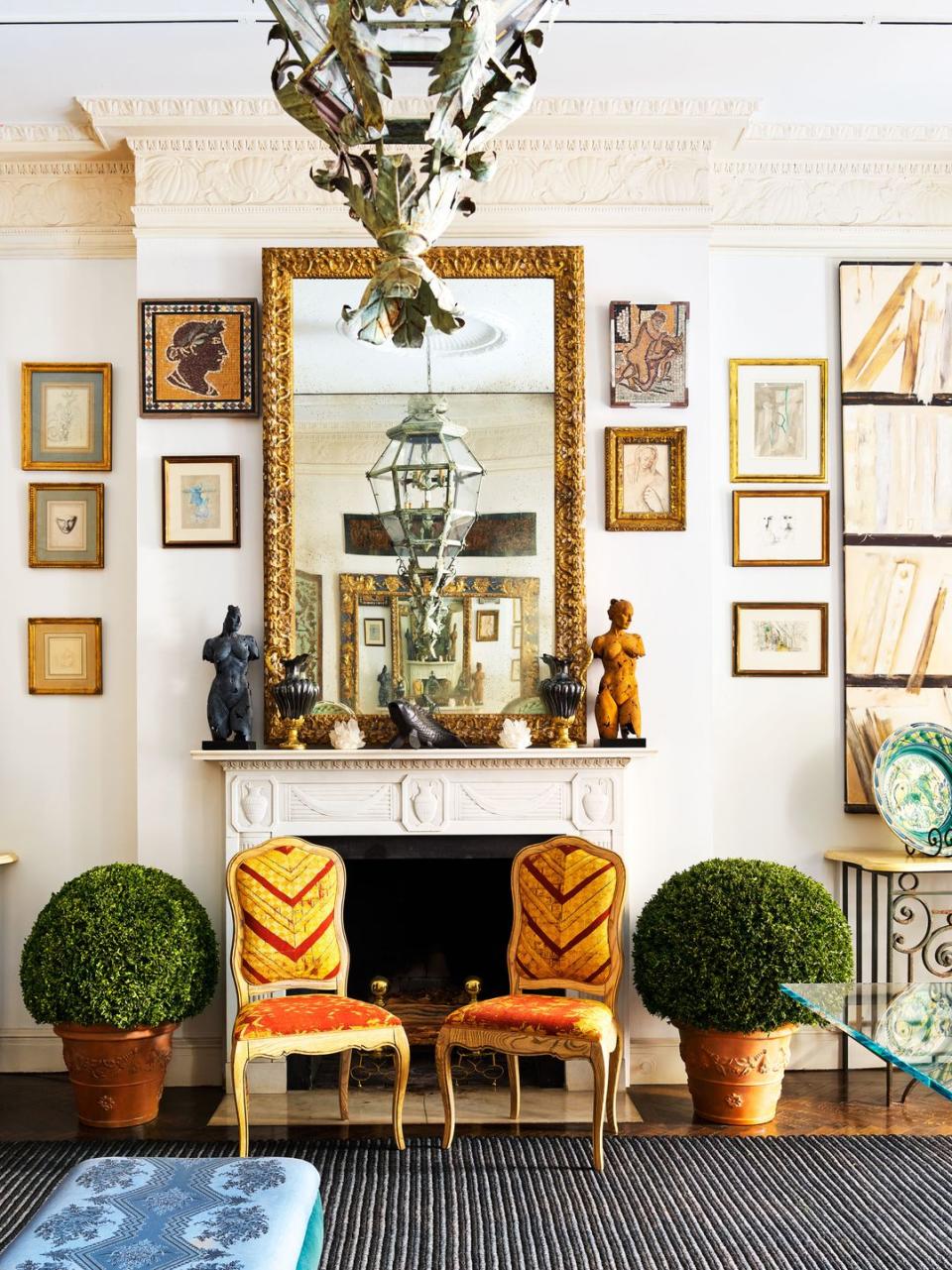
But it is her skill at organizing an interior without hewing to any particular period or style that lifts Babeth Fribourg’s taste above the ordinary. That and the ease with which she layers objects, marries artworks from throughout history and all parts of the globe—like the polyglot guests at the parties her urbane parents hosted—and blends Old World influences with new, which imbues the rooms she creates with a soulfulness that is deeply rooted in her heritage.
“Houses without personal context have no meaning,” says Fribourg, who, as befits a personal sanctuary, decorated all of the house’s six densely layered stories herself—without the aid of a for-hire interior designer—manifesting the touchstones of a lifetime in three dimensions.
Sitting on a library coffee table, for instance, is a collection of fragmentary hands and feet from ancient Roman, Greek, and Khmer sculptures. In the dining room sit a pair of chairs, part of a set of 12, designed in a Napoleon III style by Fribourg and her daughter Deborah (founder of her own interior design firm, DMF Interiors) and upholstered in Uzbekistani fabric. Antique textiles acquired from all over the world on Fribourg’s many peregrinations are scissored up, pieced together, layered atop one another, patchworked, or made into appliqué by Deborah. They are then stitched onto poufs, pillows, and ottomans, such as the vast one in the living room, created for Deborah’s Artesano collection.
“I designed it fully with my mother in mind. She has always been obsessed with antique fabrics, so I chose antique textiles from Morocco for this one,” says the younger Fribourg, who is expecting her first child.
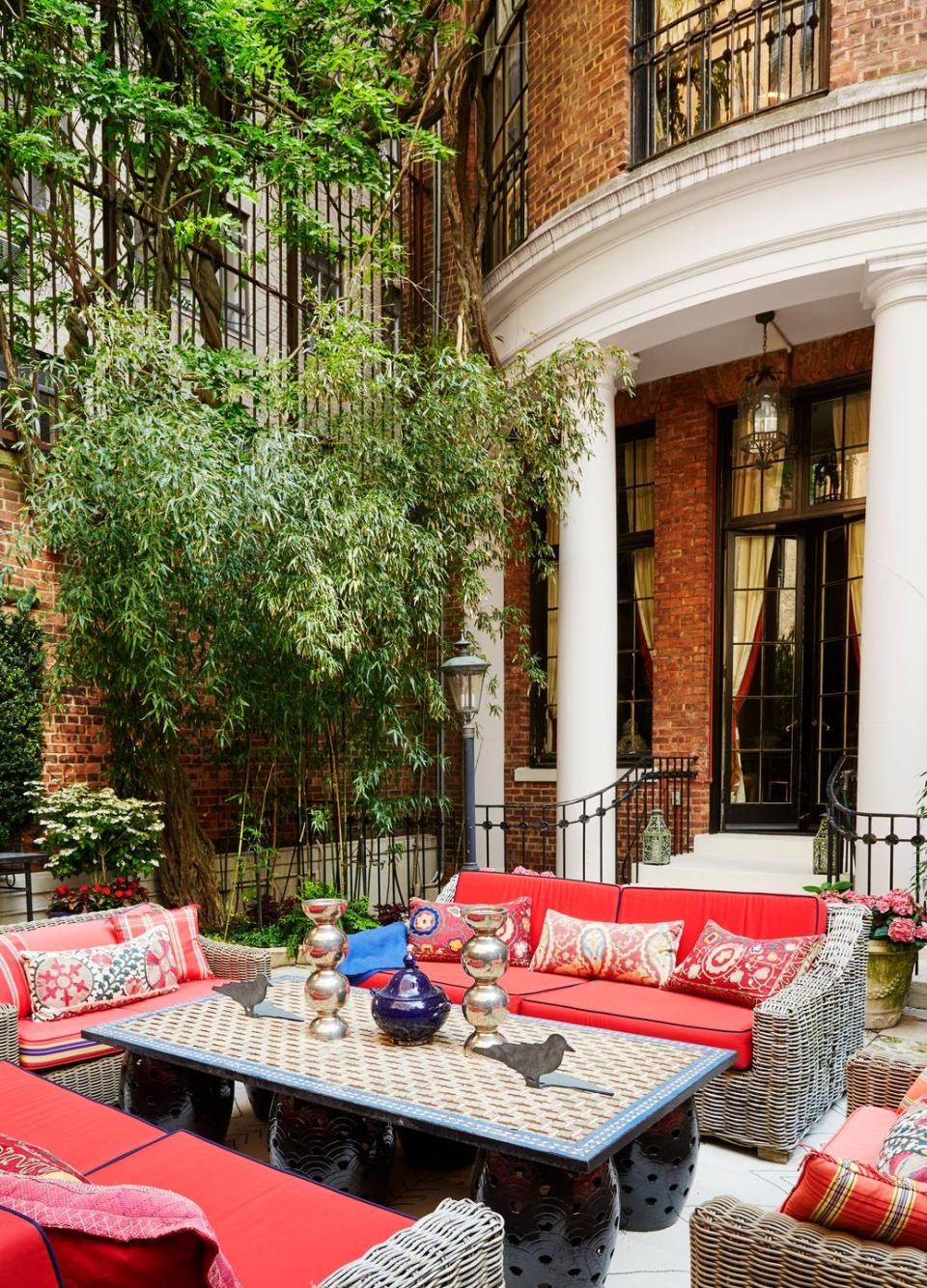
Elsewhere, the bold and unplaceable bronze lamps turn out to have been commissioned by Fribourg, custom made for the house by the French sculptor Otto Freed. As often as possible, Fribourg prefers to ask artist friends to collaborate on projects rather than fill her billboard-size walls with stuff from the art fair circuit.
“We actually spend most of our time when we’re together with family and friends here in the library,” Deborah says.
A hallway leading there, punctuated by a book sculpture by the late artist Dina Recanati and a 19th-century Chinese calligraphy scroll, opens up to a menagerie of sterling silver animalia from Portugal, plush banquettes and sofas, benches covered in 19th-century Banarasi silk, and a selection of the Moroccan ceramics scattered throughout the house, a world class collection amassed over decades. Anchoring it all are ribbed sisal rugs that prevent the tone from becoming too French and sniffy. What are sisal rugs, after all, but straw mats?
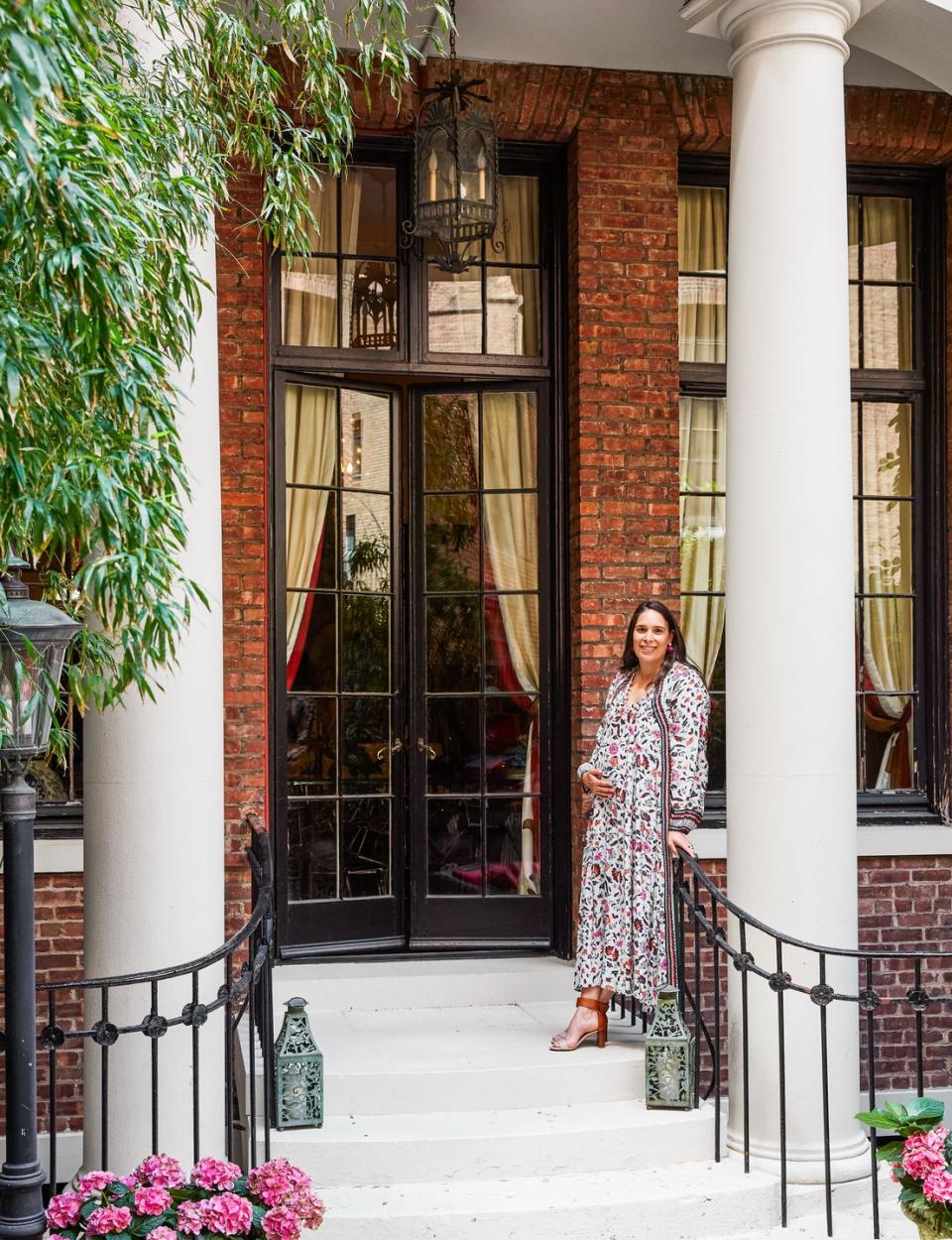
“In Morocco there is a generosity of heart,” says Fribourg, who, after 30 years in Manhattan, has decided, now that all her children are grown, to spend more time on adventures and in her family’s other homes, like their beach house on the Mayan Riviera in Mexico. “Wherever I am, people have always been welcome.” A house, she says, however well appointed, is not a home until it is brimming with company. “This is how it was in my parents’ house during my childhood. It is a deep part of our culture.
In the top image: Babeth Fribourg’s living room brims with Moroccan textiles, Madeleine Castaing seating, and modern touches by her daughter Deborah, like this sprawling ottoman from Deborah’s home accessories line DMF Maison.
This story first appeared in the September 2021 issue of Town & Country.
You Might Also Like

